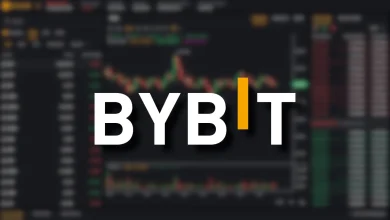Where Crypto Belongs in Your Portfolio


Every investor has a portfolio, but the key question is, where does cryptocurrency fit in yours?
Most people think of the common allocation across stocks, bonds, cash, and maybe a bit of real estate but crypto has emerged as an innovative investment category.
It’s no longer just a niche for tech enthusiasts. It’s now part of the global financial conversation.
The question of whether crypto fits in your portfolio has crossed the minds of countless investors and this article is here to provide an answer.
Key Takeaways
• Crypto is an addition to your portfolio, not a replacement for traditional assets like stocks or bonds.
• Beginners should only allocate 1% to 5% of their portfolio to crypto to limit risk.
• Prices may fluctuate dramatically, but over time crypto can grow.
• Always protect your investment by only using money you can afford to lose and storing your crypto in secure wallets or reputable platforms.
Let’s Understand Cryptocurrency
Before deciding where crypto belongs, it’s significant to fully understand the concept of cryptocurrency.
is digital money that allows people to send and receive payments without banks. It works as a peer-to-peer system, letting anyone, anywhere transact directly. Instead of physical cash, transactions are recorded digitally and secured with cryptography.
Cryptocurrencies are decentralized, meaning no single authority controls them. Networks of computers verify transactions and create new units, making the system secure and transparent.
The Role of Cryptocurrency in Your Investments
Every asset in a portfolio is supposed to serve a purpose. Stocks give growth, bonds provide stability, real estate offers income and long-term appreciation. So, what does crypto bring?
It offers diversification, as its price doesn’t always move in sync with stocks or bonds. During certain market cycles, this independence can reduce overall risk.
It also carries high growth potential. Few assets in history have matched the explosive returns of crypto in short time frames. , it opens opportunities for outsized gains.
Crypto can also act as an inflation hedge. In countries facing currency devaluation, some investors turn to BTC as a way to preserve purchasing power.
Beyond that, crypto gives exposure to innovation, letting investors indirectly participate in the growth of blockchain technology, decentralized finance, and emerging applications across industries.
This naturally raises the next question.
How Much Crypto Should You Hold?
There’s no exact rule for how much crypto you should hold. It depends on how comfortable you are with risk and what you want to achieve with your investments.
For most beginners, experts recommend keeping it small, around 1% to 5% of your portfolio.
If you prefer to be cautious, 1% is enough to gain exposure without putting your main investments at risk. A moderate approach could be 2% to 3%, offering some potential growth while keeping things balanced. If you’re comfortable with fluctuations, 5% or slightly more may be suitable, though it’s still a higher-risk choice.
Even a small allocation can have an impact over time, assisting you benefit from crypto’s growth without jeopardizing your main investments.
Where Crypto Belongs in Your Portfolio
Crypto fits best in the part of your meant for higher-risk and higher-reward assets. It doesn’t belong in the core of your investments, like bonds, cash, or conservative funds, because those are designed to protect your wealth rather than chase large gains.
At the identical time, crypto shouldn’t replace conventional growth investments like stocks or real estate, which offer steady long-term growth.
Crypto should work as a smaller, alternative asset alongside your other investments. Even a modest allocation can give your portfolio exposure to potential high returns, while keeping most of your money in securer, more predictable assets.
In other words, it’s a way to experiment with innovation and growth without putting your main financial security at risk.
Final Thoughts
The question isn’t whether crypto belongs in your portfolio, but how much of it you should include.
For most investors, it should be a small part of your overall investments, adding potential growth and diversification without taking over.
Approach crypto with an open mind, but be careful. Avoid letting excitement or fear of missing out drive your decisions. By planning carefully and keeping your allocation moderate, crypto can complement your portfolio without putting your financial stability at risk.







